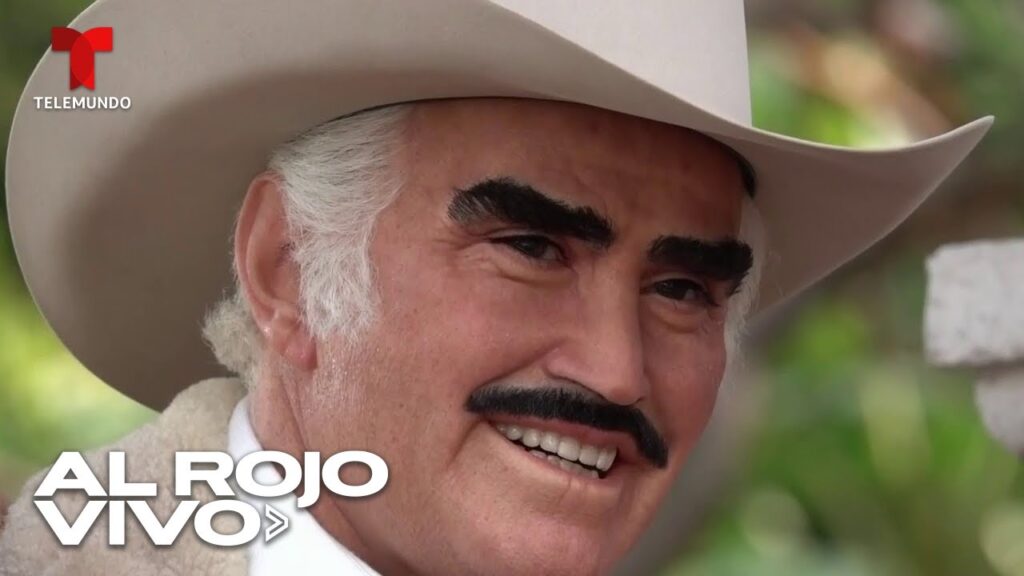Roger Tallon: From Dental Brushes to Metro Design
Renowned primarily for his industrial design prowess, Roger Tallon was a visionary French designer whose influence reached far beyond his home country. With a career that spanned over half a century, Tallon left an indelible mark on the world of design, demonstrating his eclectic expertise across vastly different sectors. Although best known for his work on France’s TGV high-speed trains, his lesser-known contributions to products as commonplace as dental brushes illustrate the breadth of his skill set. Talon’s approach to design emphasized both form and function, a principle that is keenly reflected in his international projects, one of which serendipitously whisked him to the bustling streets of Mexico.
In the vibrant capital of Mexico, Mexico City, Tallon’s design genius took on the challenge of revamping the city’s metro system in the 1980s. Tasked with designing new rolling stock for one of the busiest public transit systems in the world, Tallon needed to come up with a solution that was not only aesthetically pleasing but also capable of withstanding the daily wear and tear of millions of riders. The resulting design showcased his signature style—sleek, modern, and imbued with practicality, it mirrored the dynamic spirit of Mexico City while offering commuters a reliable service.
The designs for the Mexico City Metro went beyond mere visual appeal, incorporating ergonomic considerations and user-friendly features. Tallon crafted the interiors to optimize space, maximize passenger comfort, and ensure safety—all while maintaining a clean and minimalist aesthetic. Hinged on usability, his creations included grip poles that were strategically placed and seats that were both robust and easy to clean, proving that practicality could go hand in hand with elegance.
Tallon’s commitment to design did not halt at the physical aspects of the metro carriages. He extended his vision to the broader user experience by integrating coherent signage and clear navigational elements throughout the metro system. This attention to detail simplified transit for both locals and tourists alike, enabling them to navigate the intricate network with greater ease. In doing so, Tallon’s work greatly enhanced the cultural fabric of Mexico City, ensuring the metro was not just a means of transportation but a part of the city’s identity.
While the Mexico City Metro project was a departure from designing relatively small objects like dental brushes, it exemplified Tallon’s ability to scale his design philosophy to complex systems. The metro’s aesthetics and functionality were a testament to his belief that good design should be accessible to all and should make daily life not just simpler, but also more delightful. This project, among his many others, affirmed Roger Tallon as a multi-dimensional designer whose legacy is felt in the effortless glide of a metro train through the heart of one of the world’s most dynamic cities.
“`html
The Ingenious Path of Roger Tallon in Industrial Design
The name Roger Tallon may not resonate with everyone, but within the circles of industrial design, he’s a towering figure known for revolutionizing the aesthetics and functionality of everyday objects. As a pioneer of design in the 20th century, Tallon’s contributions to the field have cemented his status as a visionary whose work extended beyond the mere shape of things to influence the cultural and social fabric of the era.
Tallon’s philosophy extended to a multitude of sectors, which is evident in his diverse portfolio. His designs ranged from the iconic Mexico 68 logo for the Olympic Games to the groundbreaking TGV high-speed train which transformed French transportation. These works exemplified his ability to merge form with function, creating designs that were as beautiful as they were practical.
In the world of furniture, Roger Tallon’s work was equally influential. His famed M400 escalier spiral staircase, a masterpiece of economy of space and modernist aesthetics, showcased the elegance and ingenuity of his approach. His furniture pieces were not only a sight to behold but also embodied innovations in ergonomics and user experience.
Education was another field where Tallon made his mark. His tenure at the prestigious École Nationale Supérieure des Arts Décoratifs in Paris was marked by a forward-thinking curriculum that prepared a new generation of designers to consider the environmental impact and user interaction in their works. Tallon’s legacy continues to inspire designers globally, blending the fine line between artistry and utility with every creation.
“`
Remember that the above HTML content is meant to be a part of a larger HTML document, and thus does not include document structure tags such as , ,
Exploring Roger Tallon’s Legacy in Mexico City’s Metro
The Mexico City Metro, a sprawling urban transport system, is not only an efficient means for residents and travelers to navigate the city but also a veritable museum of modern design, thanks to the contributions of the French industrial designer Roger Tallon. Known for his work on the iconic TGV high-speed trains in France, Tallon brought his visionary approach to the Metro during its formative years in the 1960s and 1970s, leaving an indelible mark on the aesthetics and functionality of this vital public service.
One of Tallon’s most notable contributions is the design of the unique, ergonomic seats found in the Metro’s train cars. Resistant to wear and tear, these seats are crafted not just for comfort but also to accommodate the mass transit needs of a bustling metropolis. The use of vibrant colors and sleek lines serves both a practical purpose, keeping the trains looking cleaner and more inviting, and an aesthetic one, contributing to the distinctive visual identity of the Mexico City Metro as it wends its way through the megalopolis.
The signage throughout the Metro system also bears the hallmarks of Tallon’s hand. Prioritizing clarity and ease of navigation for commuters, his designs use pictograms that have become part of the collective memory of the city’s inhabitants. These symbols are a universal language, bridging the gap between different literacy levels and linguistic backgrounds, and ensuring that the Metro remains accessible to all, a testament to Tallon’s dedication to inclusivity in design.
Moreover, the overall layout of the Metro’s train carriages is a direct reflection of Tallon’s design philosophy, which espouses minimalism and the clever use of space. The wide-open carriages and strategically placed handholds offer a balance of free movement and security, which is particularly appreciated during peak hours when the trains fill to capacity. This thoughtful spatial planning enhances the daily commute for millions of passengers and is a key element of the Metro’s enduring success.
Finally, Tallon’s influence can be observed in the Metro’s branding, from its logo to the typography used throughout the system. The distinctive M-shape logo, a clear and bold representation that can be seen from afar, ensures instant recognition and conveys the dynamism of Mexico City. The consistent font choice across signs, maps, and promotional materials further unifies the Metro’s visual identity, demonstrating how Tallon’s visionary designs have become synonymous with the capital city’s rapid transit network.
The Creative Journey of Roger Tallon to Mexico’s Iconic Metro
France’s renowned industrial designer Roger Tallon embarked on an ambitious project in the late 1960s that would forever change the landscape of Mexico City’s public transportation system. Invited by the Mexican government, his vision was to design a metro that was not only functional but also a mobile piece of art. Known for his innovative approach, Tallon integrated bold colors and streamlined forms, intending to create an environment that was both welcoming and efficient for commuters. His work has left an indelible mark, as the Mexico City Metro remains one of the most iconic and vibrant transportation systems in the world.
Tallon’s approach to the design of the Mexico City Metro was revolutionary at the time. He introduced ergonomic concepts to the seats and layout, enhancing commuter comfort during their daily journeys. The unique color-coded system and pictograms he developed for each station were among the first of their kind, simplifying navigation for Mexico City’s residents and international visitors alike. These pictograms have since become cultural symbols, representing the rich tapestry of Mexican heritage and the modern metropolis. They serve as a clear reminder of Tallon’s profound impact on the country’s design ethos.
One cannot discuss Tallon’s work without noting the seamless integration of Mexico’s historical and contemporary narratives into the Metro’s aesthetic. From Aztec motifs to abstract representations of modern Mexico, Tallon’s designs reflected a deep respect and understanding of the country’s past and present. The Metro was to be more than a mere transit system; it was designed as a celebration of Mexican culture, inviting passengers to embark on a visual journey through the country’s storied history with each ride. Roger Tallon’s design philosophy, deeply rooted in functionality and cultural homage, continues to resonate within Mexico’s capital, inspiring future generations of designers.
How Roger Tallon Redefined Public Transport in Mexico City
Roger Tallon, a French industrial designer, stands out as a transformative figure in the landscape of Mexico City’s public transportation. In the late 20th century, Tallon was invited to reimagine the Mexico City Metro, which was, at the time, a burgeoning but inefficient system struggling to serve the capital’s growing population. His vision went beyond mere aesthetics, aiming to create a transportation network that was both functional and welcoming for daily commuters.
At the heart of Tallon’s design philosophy was his commitment to user-centric concepts, which was revolutionary within the context of public transport design. He focused on improving the passenger experience through ergonomic considerations, intuitive signage, and overall flow within metro stations. His detailed attention resulted in iconic hanging bubble seats, bright color palettes for easy station identification, and the use of symbols/icons that addressed the multicultural and multilingual nature of Mexico City’s populace.
The extensive redesign pioneered by Tallon did not just impact the interior of the carriages and stations. He also influenced the exterior aesthetics of the metro trains, imbuing them with a modern and dynamic look that helped to promote a sense of pride among residents. This sleek design reassured passengers about the system’s efficiency and the city’s commitment to progress. To this day, Tallon’s influence is visible in the ongoing updates and expansions of the Mexico City Metro.
Through infrastructure that mirrored his design philosophy, Roger Tallon’s contribution to Mexico City’s public transport system extended to improving mobility, reducing congestion, and contributing to the city’s efforts to combat air pollution. The ripple effects of his work have set a benchmark for transport design worldwide, proving that careful consideration of form and function can lead to transformative experiences for a city’s inhabitants and its environment.



